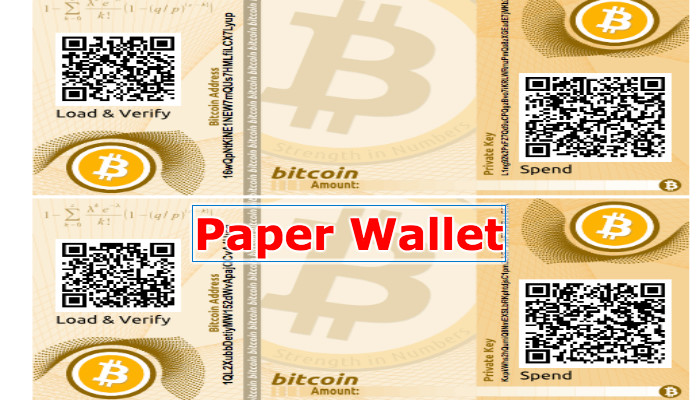
One of the key advantages of the Paper Wallet is its offline nature, which greatly decreases the danger of cyberattacks and unauthorised access. Unlike digital wallets, which can be vulnerable to hacking as well as scams that rely on phishing, a paper wallet is only available in physical form, making it safe from threats that are remote. Through the generation and storage of key private information offline, the users can protect the security of their Paper Wallet holdings against digital attackers and provide peace of mind even in the midst of a digitally savvy world.
The security of Paper Wallets is based on their security. Paper Wallet lies in its offline storage of private keys, making it immune to online hacking attempts. Because the private key never exposed to the internet during the creation or use of a paper wallet, the possibility of theft, or an unauthorized access has been greatly reduced. Additionally, paper wallets can be protected by encryption or other security features, such as password encryption, which further enhances security. If the actual document is safe from theft, damage or loss, cash stored in a paper wallet are safe and not accessible to anybody who doesn't have physical access to the document.
Despite their simplicity, Paper Wallets require careful handling to ensure security. Because the sole obligation to protect funds lies on the paper document itself, owners must make sure to take appropriate precautions to protect against loss, destruction, or loss. This means protecting the wallet from environmental hazards such as water damage, decay, or fire in time. Also, the user should think about creating multiple copies of their paper wallets, and keeping them in safe locations, further reducing the risk of losing it. To gather further details please have a peek at these guys

Another risk with Paper Wallets is the lack of accessibility and convenience compared with digital wallets. As opposed to digital wallets, exchanges, or software which provide instant access to your funds on any connected device to the internet, traditional wallets require physical access the document to initiate transactions. The limitations can be a burden when you frequently trade or need quick access to their accounts. Additionally, the process of moving funds from a traditional paper wallet to a virtual exchange or wallet can be more complex and time-consuming, requiring users to manually input their private key, or utilize specialized software.
Another consideration is the inconsistency associated with paper wallets compared to their digital counterparts. Transferring funds to a wallet that is paper-based requires inserting the private key into a digital wallet, this can be tedious and possibly error-prone. Also, accessing money stored in paper wallets may take a while, as it is a matter of accessing the physical file and inserting the private key which can be difficult to do for urgent circumstances.